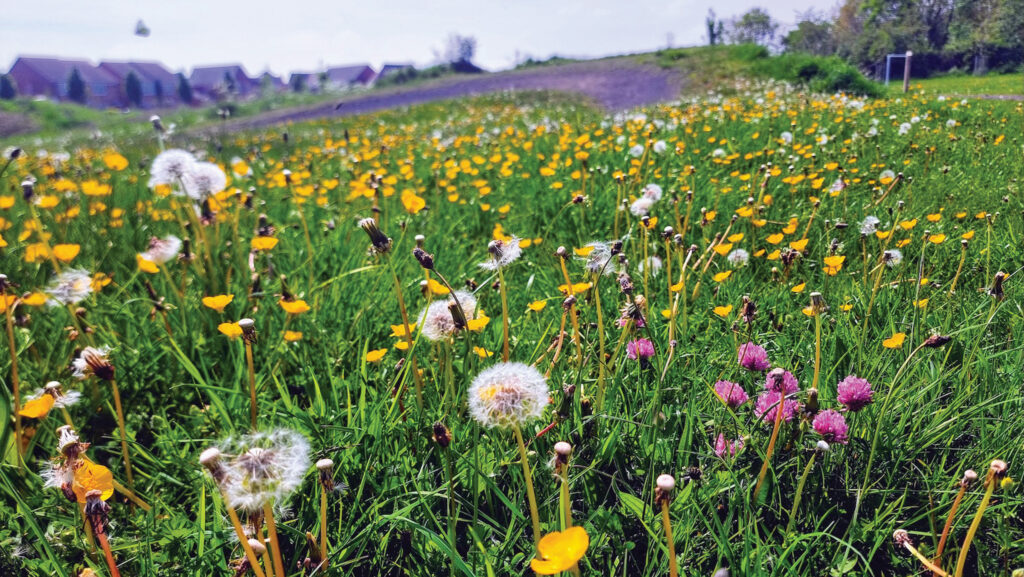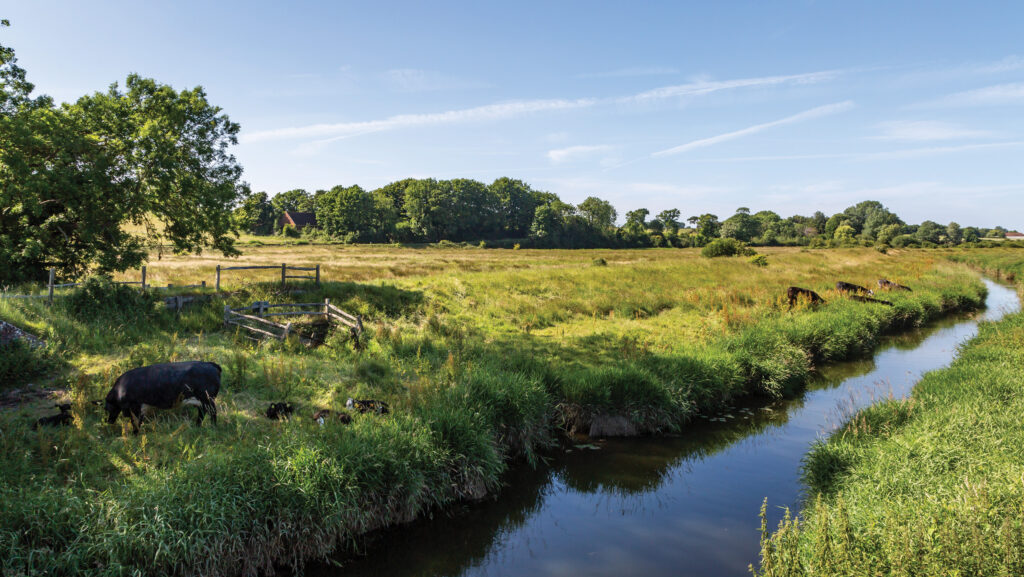Biodiversity net gain – how things stand one year on
 © Lee Dobson
© Lee Dobson The biodiversity net gain market has got off to a relatively slow start for a combination of reasons.
First, it is a complex and costly new regime. Those involved – landowners, developers, their advisers, and planning authorities – have to feel their way through heaps of guidance as the process settles in.
Second, planning authorities are short of people and cash, and both the local government and private sector are short of ecologists.
See also: Biodiversity net gain – a slowly developing market
Biodiversity net gain (BNG) is of interest to landowners who want to develop their own land, which includes the construction of farm buildings outside the permitted development regime, and to those who want to offer biodiversity units to developers.
Preparing to offer biodiversity units involves a lot of upfront work and cost – both capital to fund a baseline survey, and getting a legal agreement in place.
What is biodiversity net gain?
Biodiversity net gain (BNG) requires developers in England to deliver a measurable 10% positive impact on the biodiversity associated with their sites.
Some local planning authorities ask for more than 10% BNG, but they have to be able to justify this.
The gain can be implemented on-site or other land, so it provides a potential income for farmers through long-term agreements (30 years) on which biodiversity units are created, replacing the habitat lost to development.
BNG became a legal requirement on almost all development in February 2024, with small sites included from April that year.
The next step will be for nationally significant infrastructure projects to be brought into the BNG net, which is expected in autumn 2025.
Deborah Sharples is a partner in law firm Birketts, and heads its environment and public access to land department. She advises landowners to be cautious of direct approaches from developers and some agents.
“You’re signing up to a long-term agreement for use of your land for 30 years – you need to really prepare properly, consider the impact on your business overall and take advice before signing anything,” says Deborah.
At the Country Land and Business Association, environment policy adviser Bethany Turner says demand so far is not as great as some had expected it to be.
The addition of nationally significant infrastructure projects, expected towards the end of 2025, could significantly change this and boost demand, says Bethany.
Challenge for small sites
“The small sites side is still not working particularly well, but Defra is holding small sites meetings, so hopefully some of these issues can be resolved,” she says.
For residential development, a small site is a development with nine houses or fewer on less than 1ha of land.
Some of the small sites issues include the need for just a fraction of a unit, or units, which are not generally available.
A report by the Chartered Institute of Ecology and Environmental Management last month criticised the small sites approach to BNG, saying that its initial design was overly complex and burdensome relative to the biodiversity benefit it provided.
The report suggested several reforms to aid the development of small sites, including the introduction of a simple biodiversity tariff system as an optional alternative to using an off-site credit.
“This should be on the basis that appropriate on-site gain has been considered and, where possible, delivered at least in part.
“Funds provided through the tariff system could be distributed by Local Nature Partnerships in support of local nature recovery strategies,” it says.
NFU lead planning adviser Thomas Yule says that for those who want to offer BNG on their land, arable reversion to grassland is a likely route, but also that unimproved grassland going into species-rich grassland is an opportunity.

© Adobe Stock
Research local market and development sites
“It’s important to understand what units the market needs and the location, who is doing what, what’s in the area, and what’s being lost to development.”
Many local planning authority requirements can be quite hidden, says Thomas.
“For off-site units, there is a massive preference for proximity to the development site and/or interconnectivity of the land using BNG to rebuild the environment – for example, a strip of woodland for connectivity.
“Most local authorities have had time to update local plans and now have specific BNG policies.
“Sometimes it’s not written down in the policy, but we are seeing time and time again that many prefer land that has proximity and connectivity, especially if it connects with local nature recovery strategies.”
The NFU continues to lobby for farm buildings to be exempt from BNG requirements.
The union’s countryside adviser, Poppy Sherborne, says that for some farms building larger barns outside permitted development rights (PDRs) limits, BNG provision on farm is an issue where suitable sites are not available.
This is also the case in protected landscapes which do not benefit from PDRs.
BNG can also be a challenge for horticultural businesses as they tend to be on smaller sites so often do not have enough land on which to provide the biodiversity mitigation.
Supply and demand
Newcastle-based Biodiverse Consulting brokers biodiversity units, alongside providing a range of environmental services.
There is a high degree of variability in the preparedness of LPAs for administering the BNG regime, says the firm’s managing director Vicki Mordue, alongside variation in supply and demand of different types of units in different regions.
“Developers have tried to do as much BNG on site as possible, but I think that approach will become more realistic – people and pets don’t mix well with trying to achieve high-value biodiversity,” she says.
“One barrier in the market is that many LPAs have stuck rigidly to insisting that BNG is carried out in the same planning authority area. That will shift in time.”
In assessing the potential, landowners need to balance what will work on their land, what they are capable of managing over the 30-year period of a BNG agreement, and what’s required by the market, says Vicki.
“You also need to consider what you will look out on. It’s a misconception that you have to stop farming. It’s not a question of one or the other but of a different approach.
“For example, grassland still needs to be grazed, although at lower density.”
Biodiversity units are categorised according to habitat type and habitat distinctiveness, which ranges from “very low” to “very high” distinctiveness.
Many biodiversity units of medium distinctiveness are currently worth in the region of £30,000, with values generally slightly higher in the south of England than in the north.
Across all regions, watercourse units are in short supply and very expensive, attracting values of £150,000-plus a unit.
This offers opportunities for landowners, says Vicki, as they do not need to take out large areas of land to supply these units.
“As a rule of thumb, for a natural watercourse such as a river or stream, you can make a 10m buffer and create biodiversity units. For a ditch, the buffer should be at least 5m.”
Budget clarity
The Budget announcement on 30 October 2024 confirmed that from 6 April 2025, agricultural property relief from inheritance tax will be extended to cover Environmental Land Management schemes, and government-backed ecosystems services contracts including biodiversity net gain, and carbon credits under the Woodland and Peatland codes.
BNG exemptions
Construction under permitted development rights are not required to deliver biodiversity net gain. Other exemptions include:
- Planning applications made before 12 February 2024
- Development that does not impact a priority habitat and has an impact on less than 25sq m of habitat or 5m of linear habitats such as hedgerows
- Householder development, such as home extensions
- Self-build and custom-build applications that consist of no more than nine dwellings on a site with an area no larger than 0.5ha.
